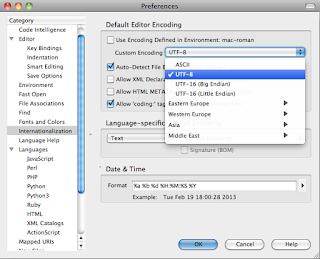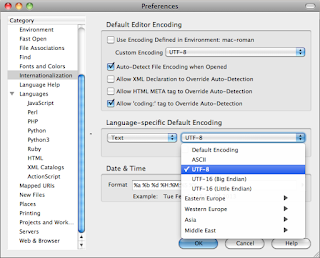This new assignment is an exercise in evaluating a current website and proposing a redesign with lists of enhancements or features that should be included.
Web Site Evaluation Assignment:
Create a document that evaluates the current web site in regards to functionality and content, and propose a redesign with focus on enhanced functionality and content. Make sure you address or try to answer all the questions in the list below. Cite examples and details of sites you like and propose a redesign. Compile all your date into a small webpage/site and upload to our server when complete.
Part 1: Review the website at http://www.rop.santacruz.k12.ca.us
- Answer the questions in the detailed "review questions" list below
- Compile your data in a properly formatted HTML/CSS site titled ROP Web Site Evaluation by (Insert your name here).
- Format the webpage with CSS for easy reading and formatting (you may use/edit a previously created page).
- Provide screen shots or other details to illustrate your data as needed.
Part 2: Cite examples
- Search online for other websites, preferably education related that you think show good functionality and visual interest.
- Provide links/screenshots with details for the features of the site that you like listed somehow
- Provide at least 3 examples of websites with features you like and list the elements that you feel work the best and will translate to the ROP web page
Part 3: Redesign/Mockup
- Create a redesigned front page and cite details and how the page functions
- You can create a pen/pencil sketch for the redesign or you could use photoshop to make a digital mockup
- List details that your front page will feature (drop down menu's, image carousel's, slideshows, videos, etc)
Review Questions: Accessibility
- Is content structurally separate from navigational elements?
- Is the website optimized for mobile? Does it resize or shift elements around to accommodate different screen sizes and resolutions?
- How compliant is the website with W3C coding standards? Valid HTML/CSS?
- Are ‘alt’ tags in place on all significant images?
- Are text-based alternatives in place to convey essential information if this is featured within images or multimedia files?
- Are links labeled with anchor text that provides a clear indication of where they lead without over using exact match anchor text?
- Depth – what is the maximum number of clicks it takes to reach a page within the depths of the site?
- Does any part of your site use Flash?
- Responsive to click feedback – Is a response given immediately (0.1 seconds) after a click is made on a hyperlink?
- Do clickable items stylistically indicate that they are clickable?
- How intuitive is it to navigate? Are signs obvious or obscured?
- Is it readable? Consider typeface, font size, color contrast.
- Is there a clear statement of PURPOSE of the site? The purpose must be clear within a few seconds.
- Do you have a clear call to action on each page?
- Is a logical site map available?, If not, is a keyword-based search feature available? Note: Large (multi-thousands of pages) sites should have a search form.
- Is the site’s design aesthetically appealing?
- Are the colors used harmoniously and logically related?
- Are the color choices visually accessible? (For example high enough in contrast to assist the colorblind and visually impaired in reading the site appropriately)
- Is the design audience appropriate?- The standard text size should be readable for visitors who don’t know how to adjust their browsers.
- Are the fonts easy to read on various screen resolutions?
- Is the website copy succinct but informative?
- Does the copywriting style suit the website’s purpose and ‘speak’ to its target audience?
- Are bodies of text broken into easy to read chunks?
- Can text be resized through the browser or do CSS settings restrict size alteration?
- Is the contrast between text and its background color sufficient to make reading easy on the eyes?
- Is text broken into small, readable chunks and highlighted using headings, sub-headings, and emphasize features where appropriate to assist in skimming?
- Within articles, are there links to more detailed explanations of subjects, or definitions of jargon terms?
- Do you have an “about page” that identifies the author of the content, credits to source for content that was not written by the site owner himself?
- Do you have testimonials and publish them on the site?
- Do you update the content regularly and don’t live by the phrase “set it and forget it”?
- Any obvious security flaws?
- How resilient are forms to special characters?
- Are private directories password protected via .htaccess?
- Are public non-document directories (cgi-bin, images, etc) indexable or are blank index.html pages or appropriate permission settings in place to block access?
- Is customer data stored online? If so, is this database appropriately safeguarded against external access?
- Does the site load quickly – even (especially) for mobile users?
- Are all links (internal and external) valid and active?
- Are scripts free from errors?
- Is the website free from server side errors?
Other Marketing Considerations
- Is the website properly optimized for search engines (essential text emphasized, title tags relevant, title text presented in H1, outbound links reliable and contextually related, etc.)
- Does the index page entice a visitor deeper into the site or shopping cart?
- Does the website contain elements designed to encourage future or viral visitation (i.e. a contest, newsletter, tell-a-friend feature, and forum with a subscription option, downloadable toolbar, RSS feed or similar)?
- Site Map available?
- Is every page accessible at least via a single plain HTML Link (no JavaScript or Flash Link)?
- Does every page have at least some text in the content? (How much text remains on the page if you remove all Images, Videos, Flash, Java Applets and JavaScript Code? Anything? Does the remainder still state the page’s purpose?)
- Is every individual page only accessible via a single URL or are several URLs available (and worse, used) to access the same page? Consider duplicate content issue and utilize canonical URLs.
- Did you include a Contact Us page with real address, phone number (toll-free for businesses) and contact form or email available, basically a clear and easy to use feedback/contact mechanism?
- DMCA Notice up? Terms of Use page available where you specify what you do and why and what visitors have to agree on if they want to use your site? This is to protect yourself from complaints or worse regarding things that you cannot control properly, such as links to third-party websites or ads from automated systems such as Google AdSense, etc.
- Privacy Policy up (especially if you collect data, email, names, and web analytics tracking cookies)?
When your document is complete, upload to our server for review by our client!
This project is due on Monday...
Have fun!
- Mr.W








